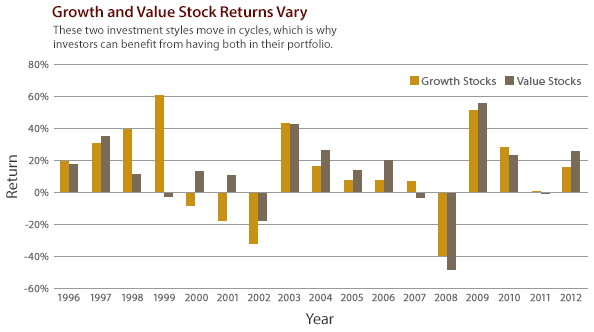Investment Diversification Definition Examples Advantages
Post on: 11 Июнь, 2015 No Comment

by KenFaulkenberry
What is Investment Portfolio Diversification?
Investment diversification is a portfolio strategy combining a variety of assets to reduce the overall risk of an investment portfolio. Portfolio risk consists of two types, systematic risk and unsystematic risk. Systematic risk is the risk associated with market returns. Sources of systematic risk would be macroeconomic factors such as interest rates, inflation, recession, wars, etc. that affect the entire market. Unsystematic risk is company specific or industry risk. This risk can be nearly diversified away.
Examples of Diversification
Asset Allocation Strategies to Mitigate Systematic Risk
Systematic, or market risk, can be partially mitigated in an investment portfolio through asset allocation. Asset allocation involves dividing specific percentages of an investment portfolio among different markets and classes. Asset categories such as equities, bonds, cash, and alternative investments may not move in the same direction at the same time.
Owning a Variety of Industries and Stocks to Mitigate Unsystematic Risk
Unsystematic risk is the risk specific to a particular company or industry. You never know when something negative might happen even to the best companies or industries. Diversification can lower the risk (volatility) of an investment portfolio because not all industries or stocks move together. Unsystematic risk can nearly be eliminated by holding a variety of non-correlated assets. In other words, if an investor owns many non-correlated investments, the harm done by one company or industry having an unwelcome experience will be minimized.
Diversification Advantages
The advantages of investment diversification are risk management and portfolio optimization. Risk management is one of the keys to successful investing. If you lose 50% of your portfolio, it takes a 100% gain to get back to breakeven. If you lose 10% of your portfolio, it only takes an 11% gain to get back to breakeven. Diversification through asset allocation may be the most important investment strategy an investor can master.
Portfolio optimization is achieved by placing a larger percentage of high return investments in a diversified portfolio. Because proper diversification lowers the overall risk of a portfolio, a portfolio manager can place more aggressive assets in the portfolio. In other words, a portfolio manager, willing to take a given amount of risk, can invest more aggressively with a properly diversified portfolio as opposed to a non-diversified portfolio.
Investment diversification is the strategy of combining assets in such a way as to reduce the overall risk of a portfolio. Examples of how to achieve investment diversification are asset allocation and owning a variety of industries and stocks. The advantages of diversification are lowered overall portfolio risk without lowering portfolio returns.
AAAMP Blog by Ken Faulkenberry
Ken Faulkenberry earned an MBA from the University of Southern California (USC) Marshall School of Business with an emphasis in investments. Ken has 25 years of investment experience and is dedicated to helping people with self-directed investment management through the Arbor Investment Planner. His asset allocation strategies have an outstanding performance record .














